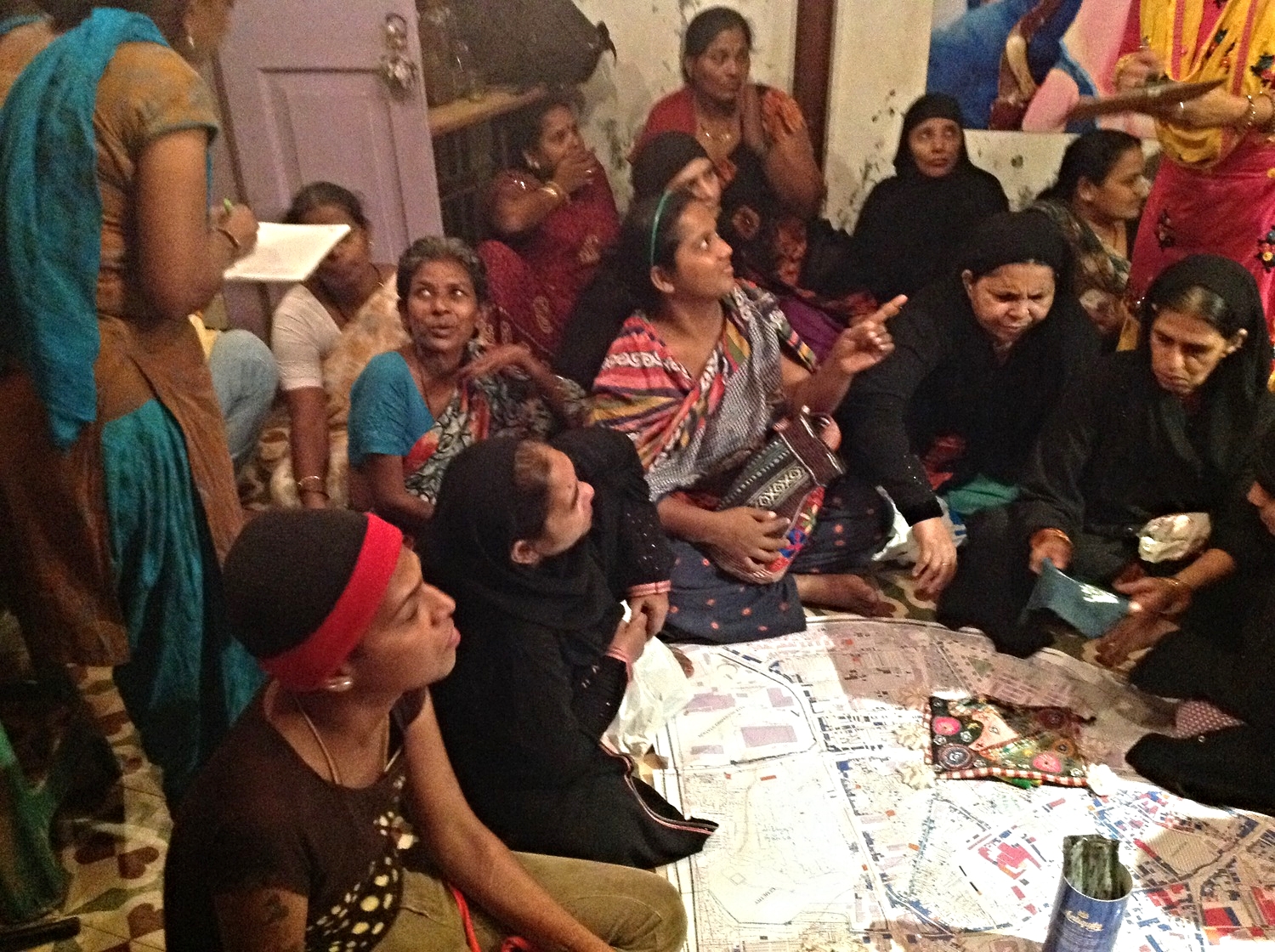Quilting a Map of Domestic Violence
I have just started working with a new textile workshop in Dharavi. For the past few years I have been a mentor artist for several art projects run by the NGO, SNEHA in Mumbai which works with the health of women and children in vulnerable communities (slums) Our first project was called Dekha/Undekha (Seen/Unseen) which culminated in a fabulous art exhibition in Dharavi in Mumbai in 2012.
For the last 18 months a follow on art project has been running, The Dharavi Biennale. As part of this art project I am working with a group of community activists to make a quilt of a map that they made of domestic violence in Dharavi. The map was made as part of a programme called Little Sister. The project works with the community activists to record domestic violence on their phones so that help can be offered. The women have been given smart phones loaded with an app called Iwatch. The information can then be used by the community and the police to quantify the actual amount of domestic violence in the area. Koushiki Banerjee, the project coordinator, said " At the press of a button they can raise an alert and register a case with complete details of the perpetrator.” Koushiki got them to mark the spots of violence on a big map on the floor with bottle caps.
Yesterday I had the first meeting with the women to arrange how we would go about making the quilt. I laid a copy of the map on the floor and had them all write their names on the area where they live. This is so that they can then make the section of the map where they live. It was such a crazy meeting, thirty women jammed into a small space, all talking at once.
Last week Sitaram and I went shopping for fabric to use for the quilt and for the sewing group. (I work with an income generation sewing group in Dharavi who make products out of recycled products and fabrics) We buy old saris and clothes from Shobha who lives in a little house in Dharavi (little means a 10ft square corrugated iron room with no windows) Her walls are a wonderful colour, I am sure that fashionable cafes would love to have this surface. She had some lovely pastel saris that the sewing group is now making into suffolk puffs to be made into scarves and other things. We also bought lots of old jeans which will be the background for the map of Dharavi. The trouble nowadays is that everyone wears very skinny jeans, especially girls. All of the jeans that Shobha had in her stock were girl's jeans, so we will need a lot of them to make one map. I also had the idea that old zips could form the two railway lines, Sion and Mahim, that border Dharavi. The other problem with modern skinny jeans is that they are also low waisted so the zips are only about 6cms long. Bring back baggy, high waisted jeans I say.
Here is Sitaram with our haul, back at the Colour Box, the Dharavi Biennale's workspace cum gallery. We also bought some old sacks to do the edges of the quilts. Don't you love the heart filled tile floor, it always makes me smile.
I am now making a plan of the areas of Dharavi, with templates of the different areas for the women to work from. Also a few samples of stitches and appliqué to give some ideas to them. Here is a little sample that I have made using packaging for the big building, clothing labels for the small houses (picked up from the floor of a little garment factory cum sweatshop that we visited, I washed it) and wire for the road. Lets see what ideas the participants come up with. I will keep you posted, our next meeting is just after Christmas.

















